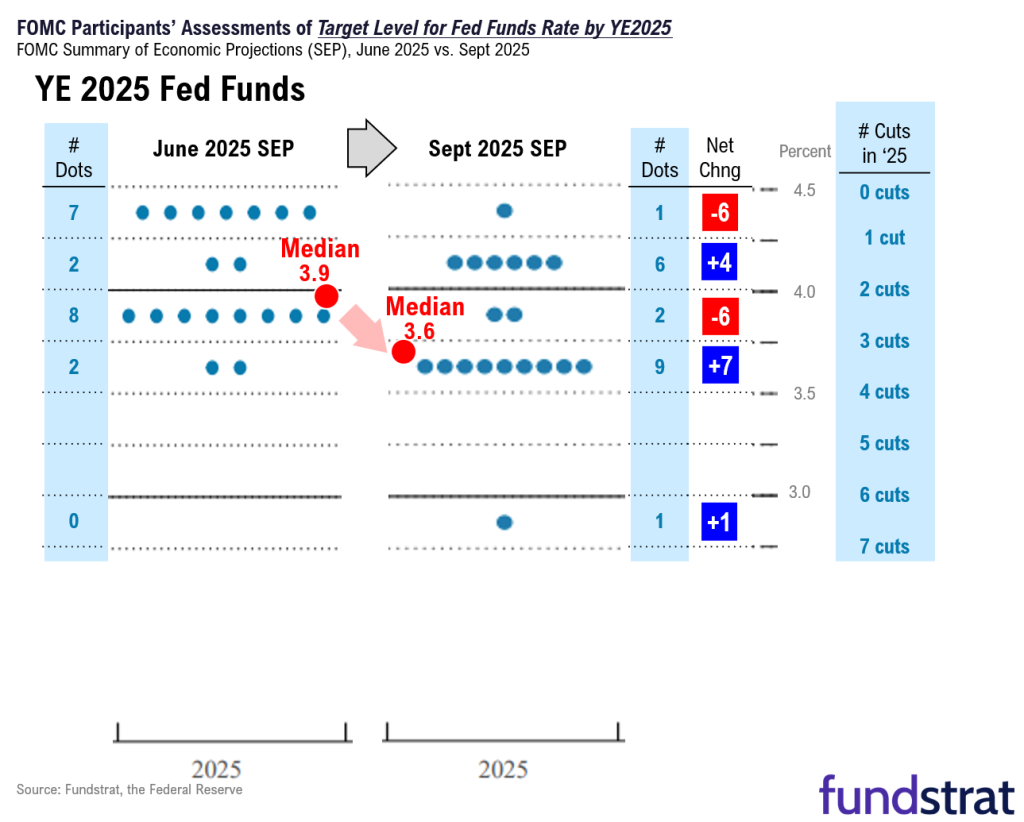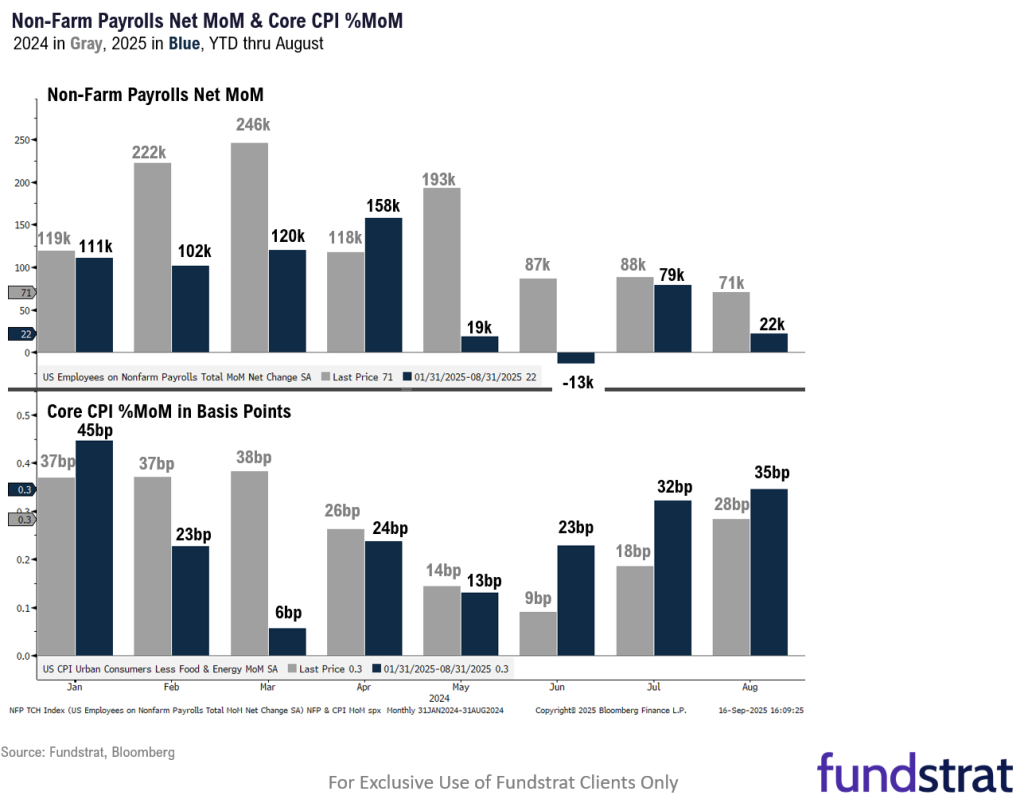The Summer I Cut Rates
“When our goals are in tension like this, our framework calls for us to balance both sides of our dual mandate.” - Jay Powell
The Federal Reserve lowered its benchmark interest rate by a quarter of a percentage point on Wednesday, citing rising risks to the labor market as the key driver behind its first rate cut since December 2024. The move, which has been widely expected per Fed Funds Futures since the July jobs report, brings the target federal funds rate to a range between 4.00%–4.25%.
In the official policy statement, the central bank acknowledged that its assessment of the labor market has changed, with officials now seeing the “downside risks to employment have risen,” a notable shift from previous meetings when the focus remained on inflation and the labor market was characterized as “solid.”
Once again, the decision was not unanimous. Stephan Miran, who had been sworn in just prior to the start of the 2 day policy meeting, dissented in favor of a larger 50 bps cut.
Governor Lisa Cook also participated after a federal appeals court allowed her to remain on the board pending litigation — an unprecedented legal and political backdrop for an FOMC meeting.
The latest Summary of Economic Projections (SEP) showed most officials foreseeing another half percentage point of cuts by year-end. The “dot plot” was notably scattered: seven of the nineteen participants penciled in no further cuts this year, two saw one more cut, nine projected two more cuts, and one even anticipated five additional cuts. This dispersion underscores just how contentious the next few meetings could be.

Chair Powell did not frame this cut as a “recalibration” of policy like he did in 2024. This time, the cut was described as “risk management.” Zooming in, recalibration suggests bringing policy back into alignment through fine-tuning, while risk management reflects a more forward-looking strategy in the face of uncertainty. Essentially, this cut was not about signaling that policy was mismatched with the economy, but about recognizing that downside risks to employment have risen enough to warrant insurance against a deeper slowdown, particularly amid evolving trade and immigration policies.

Also of note during the press conference were Powell’s comments on Fed Independence, both direct and indirect. The Chair reminded viewers that “everything we do is in service to our public mission” and stressed that “we’re strongly committed to maintaining our independence.” In response to questions about White House influence, Powell noted that it is “deeply in our [Fed] culture to do our work based on the incoming data and never consider anything else,” adding that “that is not at all the way we think about things at the Fed. We’re taking a longer perspective, we’re trying to serve the American people as best we can.” He reinforced this point by describing independence as being “in the DNA of the institution,” and when pressed about declining public confidence, said simply that the Fed would “use our tools to achieve the goals that Congress has given us… we’re just going to keep doing our job.” Powell also highlighted operational independence by reminding markets that “policy is not on a preset course,” that the Fed makes decisions “meeting by meeting” and that the Fed must “live life looking through the windshield rather than the rearview mirror.” Taken together, the remarks were a strong assertion that the Fed remains focused on its dual mandate, not politics, and that independence is fundamental to how it operates.
The S&P 500 had a mixed reaction to today’s decision and press conference, with the 1D return ranging from +0.23% to -0.78% during the press conference and ultimately ending the day muted at -0.10%. This hardly comes as a surprise, since consensus has been expecting a cut since the July jobs report.
While hard to pinpoint exactly, one possibility is that the reversal during the press conference was due to a dovish market interpretation of Powell’s acknowledgement that the labor market is showing signs of weakening and policy will be more oriented towards employment as the pass-through of tariffs into inflation has been slow.

Treasuries initially sold off on the news, with the 10-year dropping 6 bp and the 2-year falling 7 bp, before sharply recovering to trade above pre-decision levels—ending the day up 6 bp for the 10-year and 5 bp for the 2-year. Nonetheless, the press conference and rate decision appear to have had little impact on the broader downtrend that has persisted in both yields since the start of the year.
FOM C you in October!




